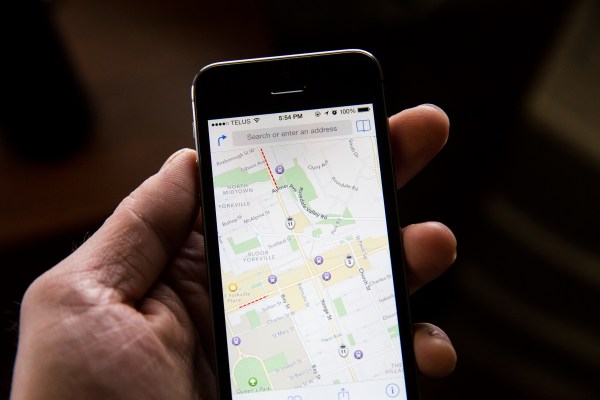Let’s be honest — Apple Maps had a rough start. Four years later, the company is still working hard on improving its location app with more data and features. Many people still prefer Google Maps over Apple Maps, but it’s clear that Apple is in this game for the long haul.
Last week, Parkopedia announced that it will be providing parking information in 75 different countries. Apple Maps users will be able to find more information about parking spaces. In other parking news, Apple Maps in iOS 10 will automatically remember where you parked your car if you’re not parking it at your home address.
But if you’re like me, you don’t really care about cars. All you want is transit information. On this front, Apple isn’t taking the easy way out. The company is adding cities one by one, respecting the fonts, colors and presentation of each city. This WWDC video explains well all the work that goes into transit information.
Apple is also adding each individual subway station entrance so that it’s easier to follow public transportation directions. Even just tapping on a subway entrance will give you more information about accessibility, escalators, etc.
That’s why many big cities are still missing, but it seems like the company is adding cities more quickly these days (please, Apple, add Paris). So far, transit directions are available in a dozen cities in the U.S., a handful of Canadian cities, 300 cities in China, Berlin, London, Mexico City and Rio de Janeiro.
In my experience, Citymapper is still much better than Apple Maps to get public transportation directions. But it’s nice to have at least an idea of the surrounding stations in your default mapping app.
And then, there’s the big iOS 10 redesign. While the core maps remain the same, Apple has completely overhauled the user interface. It feels less cluttered and easier to use. As a nice side effect, you get weather forecast in the corner. And Apple can now easily suggest addresses with this interface. For instance, if it’s 7 PM and you usually go back home at this time of the day, Apple will suggest you directions to your home.
[gallery ids="1361887,1361888"]
I’ve been using Apple Maps as my main map app for a year. It’s hard to change your habits from Google Maps. But maps in Apple Maps simply look better and provide more information. Most of the time, I can now find what I’m looking for inside Apple Maps. It’s still not as good as Google Maps when it comes to searching for something, but it’s getting there. And it feels like a native app, unlike Google’s material design apps.
There’s a reason why many, many people use Apple Maps today — it’s the default app. Many people don’t care about App Store apps. They’d rather use the default apps if they’re good enough. They’re not looking for the new shiny thing. So that’s what Apple wants — being good enough. The power of default apps should never be underestimated.
In addition to that, Apple Maps is better integrated into the operating system. If you ask for directions in Siri, iOS will launch Apple Maps. If you tap on an address in Messages, it will take you to Apple Maps. And, even more important, Apple Maps on the Apple Watch works incredibly well. Vibration patterns tell you if you should turn left or right without having to look at your phone. It’s great when you’re walking around a city and want to leave your phone in your pocket.
Finally, iOS 10 will let third-party developers build extensions for Apple Maps. For instance, you’ll be able to book a restaurant table or order an Uber directly within Apple Maps. This could turn Apple Maps into a platform.
When Apple started working on Apple Maps years ago, the company wanted to part ways with Google and remove all the bundled Google apps in iOS. That’s how YouTube and Google Maps ended up in the App Store.
But since then, something weird happened. Mapping became essential for technology companies looking at self-driving cars. Only a company with a great mapping product can build end-to-end self-driving technology. That’s probably also why Uber is investing $500 million into an in-house mapping product. Retrospectively, Apple Maps looks like a smart bet as the company is now working on a car.
